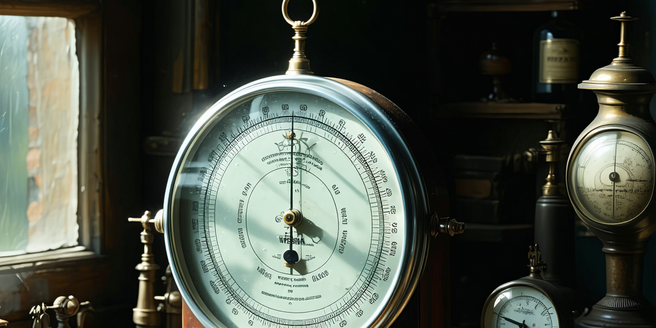
Understanding the Importance of Atmospheric Pressure Measurements
Atmospheric pressure measurements are crucial for various fields, including meteorology, aviation, and oceanography. Understanding these measurements allows us to predict weather patterns, assess climate changes, and ensure safe travel. Atmospheric pressure is the force exerted by the weight of air above a surface, and its variations can indicate changes in weather. High-pressure areas often correlate with clear skies, while low-pressure areas may signal storms. Additionally, tracking these changes over time helps to monitor global warming and its effects. For aviators, pressure readings are essential for altitude calculations. Without precise data, flight operations could face significant risks. Thus, atmospheric pressure measurements not only enhance our understanding of the environment but also ensure safety and accuracy in various applications.
An Overview of Traditional Barometers and Their Uses
Traditional barometers have been fundamental tools for measuring atmospheric pressure for centuries. The two main types are mercury and aneroid barometers. Mercury barometers use a glass tube filled with mercury, where the atmospheric pressure causes the mercury to rise or fall in the tube. Though accurate, they are less commonly used today due to mercury’s toxicity. Aneroid barometers, on the other hand, use a small, flexible metal box called an aneroid cell. This cell expands and contracts with changes in atmospheric pressure, and these movements are translated into pressure readings. While less precise than mercury barometers, aneroid versions are safer and more portable, making them ideal for field use. Both types have historically been crucial for forecasting weather and are still valued for their precision.
Exploring Advances in Digital Pressure Sensors
Recent years have seen remarkable advances in digital pressure sensors, offering greater accuracy and convenience in measuring atmospheric pressure. Unlike traditional barometers, these sensors incorporate electronic components to provide real-time data, often integrated with weather stations and mobile devices. Digital pressure sensors are lightweight, compact, and can analyze pressure changes rapidly, making them perfect for dynamic meteorological applications. They often come with additional features such as data logging, connectivity to the internet for easy access, and compatibility with GPS for altitude calibration. These advancements have improved our ability to forecast weather conditions and study environmental changes. As technology continues to evolve, digital sensors are expected to become even more sophisticated, providing deeper insights into atmospheric dynamics and enhancing safety in fields reliant on accurate pressure data.
Comparing Mercury and Aneroid Barometers
Mercury and aneroid barometers are both used to measure atmospheric pressure, but they operate differently and have distinct advantages. Mercury barometers are the oldest type and are highly accurate. They use mercury in a glass tube; atmospheric pressure changes result in variations in the mercury’s height. Due to their accuracy, they are often used in scientific applications; however, mercury’s toxicity poses environmental hazards. Aneroid barometers avoid the use of liquid elements by employing an aneroid capsule, which expands and contracts with pressure changes. These are easier to transport and more durable, making them suitable for everyday weather predictions and educational purposes. While mercury barometers provide precise readings, aneroid versions offer safety and convenience, demonstrating the trade-offs between precision and practicality in atmospheric pressure measurement tools.
Innovative Tools for Accurate Weather Forecasting
The pursuit of accurate weather forecasting has led to the development of innovative meteorological tools. Revolutionary sensors now assist forecasters in obtaining precise atmospheric data. Automated weather stations equipped with advanced pressure sensors, temperature gauges, and humidity trackers gather comprehensive data quickly. Satellite technology has also transformed weather prediction by enabling large-scale monitoring of global weather patterns. Combined with powerful computer models, these technologies provide insights into atmospheric conditions and enhance forecasting accuracy. Furthermore, the integration of machine learning algorithms allows for the analysis of historical weather data, improving long-term climate predictions. As technology advances, these innovative tools continue to refine the precision of weather forecasting, ensuring communities worldwide are better prepared for weather-related challenges.
